The Gulf of Mexico, Deepwater Horizon Oil Spill
- Provided 20 technicians and scientists to collect samples, design and execute rapid sample intake protocols, and prepare sampling training modules to train project personnel and stakeholders.
- Participated in NOAA sampling cruises in the Gulf to collect samples of fish, sargassum, plankton, water, sediment, and to maintain the Acoustic Doppler Current Profiler (ADCP).
- Established satellite sample intake facilities and developed rapid sample intake and sample accessioning protocols.
- Assisted with sampling campaigns on land and aboard research vessels; managed sample receiving, accessioning, and shipping activities; and performed field data reviews and uploads.
- Assisted NOAA in developing and providing sample collection training to field teams and trustees throughout the Gulf of Mexico.
- Developed the team’s work scope by preparing and providing formal training and training tools for NOAA NRDA sampling activities onboard the NOAA Gulf Oil Spill vessels.
- NOAA chief scientists specifically requested that EAS personnel lead the sampling and data management operations aboard the NOAA cruise vessels. Several EAS staff members were formally trained to use the NOAA/NRDA data management system.
- EAS performed more than 100,000 staff labor hours on this project with no significant safety or quality-related issues.
Evaluating the Abundance, Distribution, and Densities of Plankton
- Collected samples of meroplankton and holoplankton to assess their occurrence, abundance, biomass, vertical distribution, and daily vertical migration.
- Collected depth-discrete samples at various intervals throughout the water column using a deep water 1-m2 multiple opening/closing net and environmental sensing system (MOCNESS).
Collecting Benthic Sediment Cores Using a Remotely Operated Vehicle
- Collected deepwater sediment samples in the central Gulf of Mexico to determine potential impacts of the oil spill on resident benthic fauna. We worked with NOAA sampling leads to deploy a sediment coring system mounted to the top of a remotely operated vehicle (ROV) for sample collection.
Documenting Oil Contact with Coral and Deep Water Communities
- Supported NRDA studies to document direct oil contact with coral and deepwater communities and assess impacts to the food chain from the surface to the bottom.
- Sampled surface plankton and sargassum using semi-permeable membrane devices (SPMD).
- Assisted with ROV video transect imaging.
Characterizing Juvenile and Adult Fish in the Mesopelagic and Bathypelagic Zones
- EAS conducted surveys to evaluate the composition, distribution, and densities of juvenile and adult fish and larger invertebrates in offshore waters potentially affected by the Deepwater Horizon oil spill.
